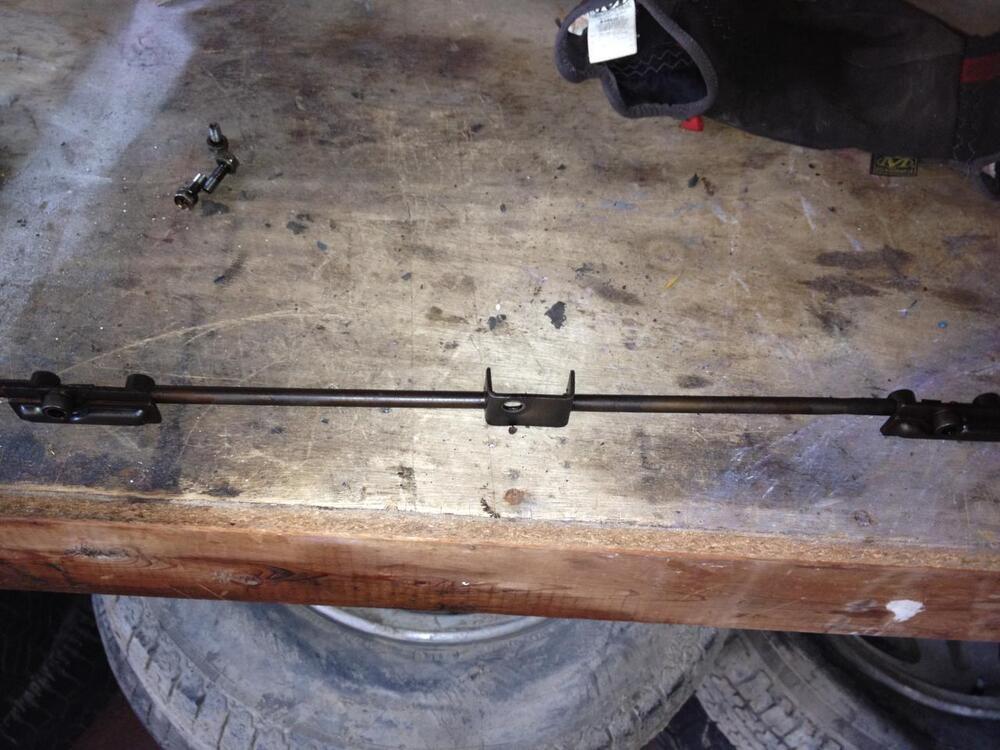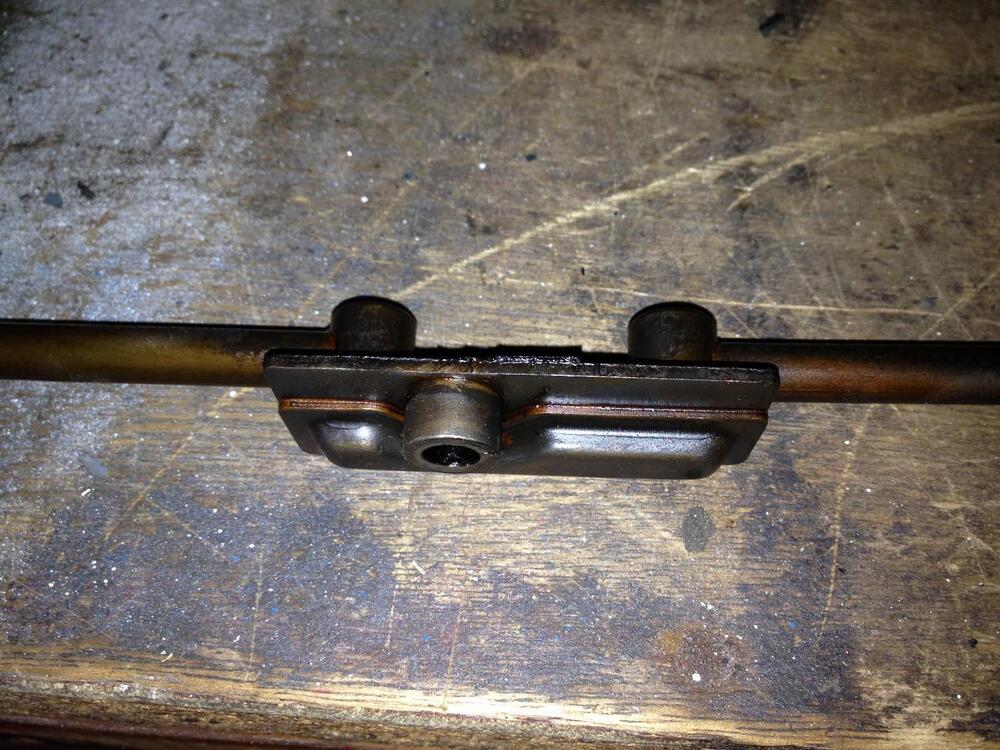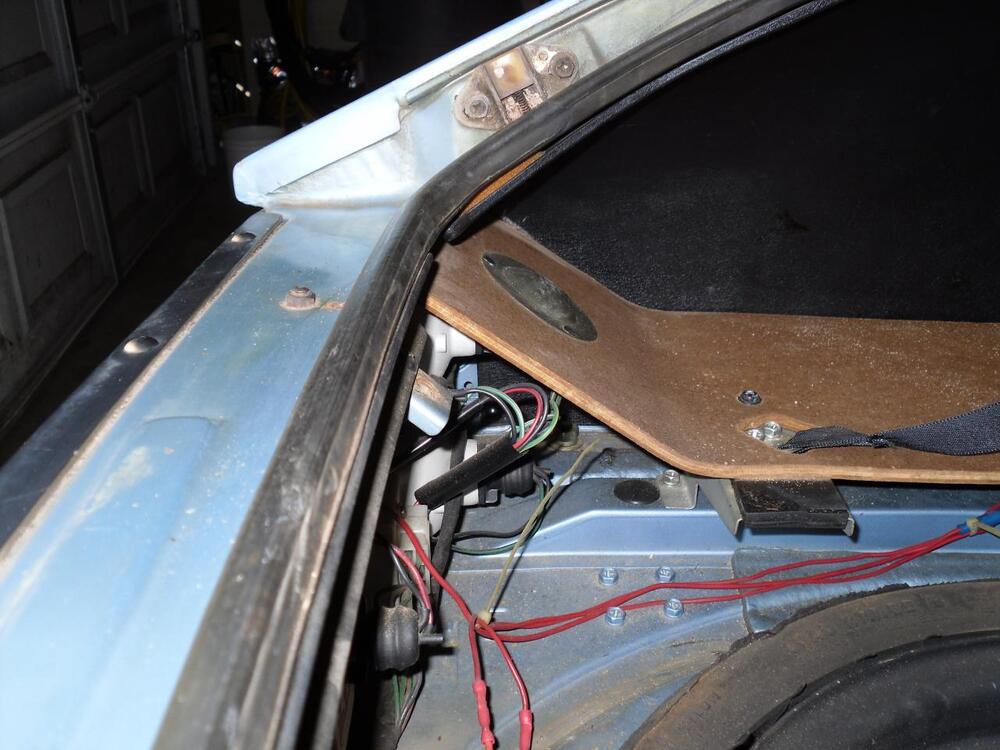Everything posted by Captain Obvious
-
I’m Back!
-
Quaife LSD Installation in R180 - With Questions About Installation Also
Whatever works. If you want to send one of the R160 shims, I can poke it with the tester. I'm sure 3.5mm would be thick enough. One would assume that the new 160 shims are similar to your old original, but stranger things have happened.
-
Quaife LSD Installation in R180 - With Questions About Installation Also
Agreed. Those look pretty much dead soft. (Annealed.) If you dare, you could hit the edge of your original factory shim with the file the same way and see how it compares? I think you could do that and not affect performance. That could give you something to compare against as far as what hardness you are looking for?
-
Quaife LSD Installation in R180 - With Questions About Installation Also
Well based on the application (king pin shims), I would assume they are relatively hard and would be suitable for the differential application. You can get a quick and dirty idea of how hard they are using a small hand file to see it it will cut those new shims. The corner of a small file will a) cut like butter, b) completely skate across the shim without cutting, or c) somewhere in between. You want "in between". Another thing you could try is if you fold one of those shims in half... Does it fold easy and stay pretty much completely folded? Does it snap into two piece? Or does it fold but springs back a bunch when you let it go. I think you want the third option. I know this is all just subjective words, but from a distance, that's all I got. And I may have mentioned this already, but I can run a Rockwell hardness test on parts if necessary to determine the Rockwell rating. Although I'm not sure it will be accurate on something as thin as .005.
-
Quaife LSD Installation in R180 - With Questions About Installation Also
Yeah, I'm not surprised about the minimum. At this point, I could probably be convinced to cut one part if you want to cover costs, etc. Send me a PM if you're interested.
-
Arkansas twins
What about @Zup? Any word?
-
[2024] What Did You Do To/with Your Z Today?
I've heard people talk about a "diff clunk", right? Hahaha!! And I totally get you about the cold temps. I used to be able to work on cars in the cold. Not so much anymore. My hands just can't take it.
-
Quaife LSD Installation in R180 - With Questions About Installation Also
Maybe it's just me, but I suspect the first thing your machine shop is going to do is convert your drawing to English system. With that in mind, I'd just do it for them. I know any machinist ought to be able to do the conversion, but I'd just do it for them. Also, is the pinion shaft diameter smaller than 35mm? If so, you're good. But if the shaft is right at 35mm OD, then a 35mm ID spacer isn't going to fit over it. You'll need to open up the ID a couple thousandths just to get it to fit and not bind when you try to slide it on the shaft. As for material, I think 1045 in the annealed state would be a reasonable choice. It should certainly be harder than the 1008 stuff.
-
240Z gauge electrical problem AGAIN!
The only possible use for an amplifier like that in 72 would have been to kill the application of the throttle opener device as you came to a stop. But in order to do that, your throttle opener would have to be the defeat-able style design, and I don't think that even started until the flat top carbs. Does your throttle opener control valve even have a wire going to it?
-
[2024] What Did You Do To/with Your Z Today?
Wow! That must have made quite the noise!
-
Arkansas twins
And what about @Zup? Anybody heard a peep. Hey FrogSquisher. You still read the forum??
-
Quaife LSD Installation in R180 - With Questions About Installation Also
My thoughts? I agree. Having not been through this exercise myself, I'm not sure of all the effects of changing the pinion position like that. Maybe you'll get lucky and end up exactly where you need to be. And if not, you'll have a better handle on the effect(s) of the change.
-
'78 internally oiled camshaft?
Speaking of such things... I'm looking for one of the newer design spray bars. Any of you guys who went to internally oiled cams have one laying around they don't need anymore? The later design that looks like this:
-
Quaife LSD Installation in R180 - With Questions About Installation Also
That would be my assumption as well. Little bit here makes a large change there. If your measurements are correct, I think you are going to bind with a 12 thousandth thicker shim in there. Did you ever use some thing shim material to try to figure out what thickness (total) you really need?
-
Tail light inner plastic panel fitment
I've had two 77's over the years and both of them had the flat floor and a plastic interior panel over the taillights. Maybe they switched mid-year in 77, but it's definitely not strictly a 78 thing.
-
Tail light inner plastic panel fitment
Here's a hoovered pic that might answer the question. I don't think you use the plastic panel at all if you have the sloped deck:
-
Stereo tape in 280z (Clarion Radio Connector)
Well assuming the radio came from an earlier year Z, (which is what the wire colors seem to indicate), the white and white/black pair are the two wires that fed the original (one and only) speaker. The white is speaker (+) and the white/blk is speaker (-). There is no way to get "stereo" out of that radio. Ever. You could get sound to come out of more than one speaker maybe, but it will never be stereo. In order to get sound to come out of more than one speaker, you would just put them in parallel, but you do need to be careful about the loading. The radio was designed to drive one 8 Ohm speaker, and it sounds like you are trying to drive two 4 Ohm speakers in parallel. If that's the case, that combo works out to a 2 Ohm load and the amp probably isn't going to appreciate that much.
-
Quaife LSD Installation in R180 - With Questions About Installation Also
Yeah, I think the first order of business is to definitively figure out exactly what thickness you need to get correct lash. After that, you can figure out how to achieve that task. As for the question about grinding the new washer... I was going to suggest exactly that. Assuming the new washer is thicker than what you really need, then knocking the thickness of that one down to what you need would be my first choice. Only thing that would make that plan questionable would be if there were some sort of case hardening on the shim. You should be able to tell once it arrives. It's not yet even guaranteed that it will arrive though, is it?
-
Quaife LSD Installation in R180 - With Questions About Installation Also
Well if you don't have any other option, try cutting out some of that .003 softer material. At least to confirm the overall shim thickness you need. If you can confirm the total thickness, it shouldn't matter how you achieve that total. For example, take the total, cut it in half, and buy two new shims that come to that dimension. Or 75%-25%. Point is... Whatever you can find available. You don't need to be tied to the original shim thickness and a .003 augment.
-
280z radio pinout?
I moved to your other thread since you started there. https://www.classiczcars.com/forums/topic/68722-stereo-tape-in-280z-clarion-radio-connector/
-
Stereo tape in 280z (Clarion Radio Connector)
I'm moving over here from that other thread since this is where you started. So just to make sure I understand the issue of what's going on here... You have a 77 car and you're trying to install a Datsun radio from an earlier year, presumably from a 76. This pic you posted above shows the typical black connector the used in 1977: On that connector the wires are as follows: Blue is +12V power in. Hot when in ACC and ON. One of the blacks is connected to chassis ground. The other black is the speaker (-) connection. Black/Red wire is the speaker (+) connection. Green/White is panel illumination high side. Goes to the headlight switch. Red/Blue is panel illumination ground side. Goes to the rheostat. So that's the CAR side of things. Can you take a pic of the back of the Clarion that you are trying to install? You have some pics above, but they don't show all the wiring. The connector is tucked under the radio.
-
Quaife LSD Installation in R180 - With Questions About Installation Also
Well honestly, I find that description of "full hardened temper" to be marketing jargon at best, and completely nonsensical at worst. By that, I mean... For something to be "full hardened" it means "was made as hard as we could make it and did not temper at all after hardening". If you tempered it, it's not full hard anymore. That's the whole point of tempering. But even before that... The description of the listing says it's 1008 steel, which doesn't contain enough carbon to even BE hardenable in the first place. You need a certain amount of carbon in the mix before steel will even react to a hardening process, and 1008 is well below that threshold. So, when I see "full hardened" 1008 steel, it really makes no sense to me. I would expect 1008 to be dead soft malleable whether you TRIED to harden it or not. The plastic deformation threshold would be very low compared to something that is (honestly) heat treated hardened. For example, if you take a look at the shims from McMaster. They also offer low carbon steel shims. 1008-1010 steel. And the hardness rating is Rockwell B40. The higher carbon "spring steel" shims (1074-1095 steel) is significantly harder at Rockwell C44 or at least B85 I'm curious how hard the original spacer is.
-
Quaife LSD Installation in R180 - With Questions About Installation Also
I just took a quick look at McMaster and the thinnest hardened shim they have is 0,1mm (.0039) about 4 thousandths, which is too thiick. You could grind the thickness of your original spacer down to need a thicker auxiliary spacer. I don't know why she swallowed a fly.
-
Quaife LSD Installation in R180 - With Questions About Installation Also
Hmmm. I'd be reluctant to use that Amazon shim material in this application. I think I'd want a hardened washer in that application. How high do you torque the nut on the end of the pinion gear? I'm worried that you would ooze a low carbon shim at high torque. Is the original spacer shim hardened? Does a file cut it easy, or just skate off the surface? But you could certainly use that shim material as proof of concept. You could cut that thin stuff (.003) with scissors for the OD. Easy peasy. The ID you might be able to hack out with a razor knife. I'm thinking that the profile doesn't have to be perfect, just fit over the pinion even if the ID is a little rough. Cut the shim, put it together and check the backlash. That will at least confirm for sure what thickness shim you really need.
-
280z radio pinout?
I believe the 240-280 radios were all mono. Can you take a pic of the connector on the back of the Clarion?












